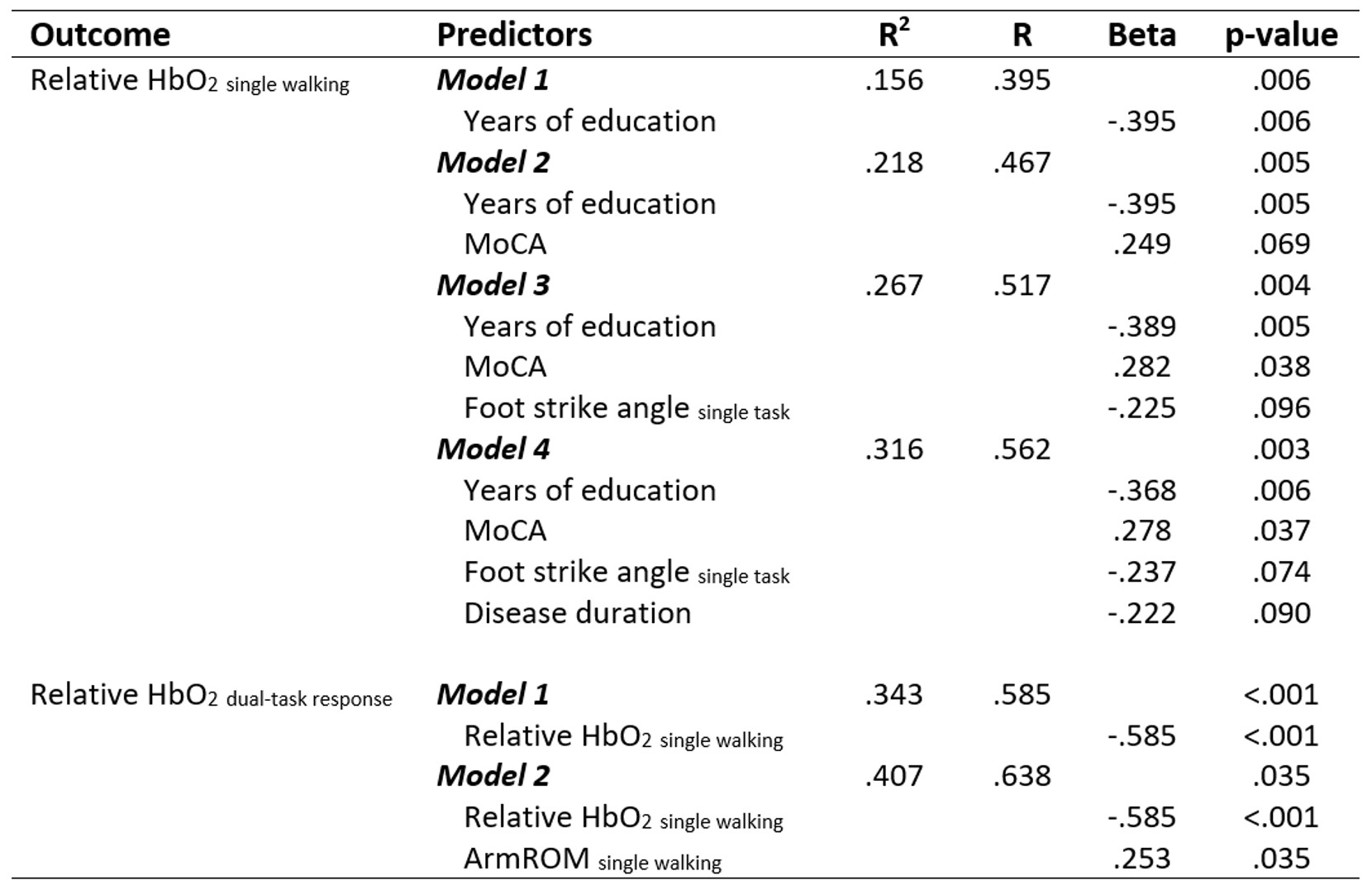Category: Parkinson's Disease: Neuroimaging
Objective: We examined the contribution of clinical, cognitive, and gait characteristics to prefrontal cortex (PFC) activity during walking and its response to dual-task in people with Parkinson’s disease (PD).
Background: Walking in people with PD is characterized by lack of automaticity and compensatory prefrontal executive control. Studies applying functional near-infrared spectroscopy (fNIRS) to assess PFC activity while walking in people with PD often report high inter-subject variability, especially for PFC response to dual-task walking. Determinants of variability in PFC activity while walking remain unclear.
Method: Forty-seven people with PD walked back and forth over a 9-m straight path (with a 180° turn at each end) for 80 seconds. Two conditions were tested off medication: single and dual-task walking (i.e., walk with a concurrent cognitive task). A portable fNIRS system recorded PFC activity while walking and wearable inertial sensors measured spatiotemporal gait parameters. Clinical and cognitive characteristics were assessed through validated tools. Stepwise linear regression analysis was applied to determine predictors of PFC activity (relative HbO2 levels) during walking and PFC response to dual-task (i.e., dual-task – single-task walking).
Results: A model including years of formal education, global cognition (Montreal Cognitive Assessment), foot strike angle during walking and disease duration explained 31.6% (p=.003) variance in PFC activity during walking [table1]. In turn, PFC activity during walking explained, by itself, 34.3% (p<.001) variance in PFC response to dual-task walking; the inclusion of arm range of motion during walking to the model increased the explained variance to 40.7% (p<.001) [table1]. Lower PFC response to dual-task walking was associated with greater PFC activity during single-task and shorter arm range of motion during walking, which have been proposed as markers of executive control of walking.
Conclusion: Multiple aspects, including clinical, cognitive and gait characteristics, contribute to prefrontal executive control of walking in PD. PFC response to dual-task walking in PD seems to be limited by the amount of executive resources allocated to the control of walking (i.e., potential response ceiling effect).
To cite this abstract in AMA style:
R. Vitorio, S. Stuart, M. Mancini. Factors contributing to prefrontal cortical activity during walking and its response to dual-tasking in Parkinson’s disease [abstract]. Mov Disord. 2021; 36 (suppl 1). https://www.mdsabstracts.org/abstract/factors-contributing-to-prefrontal-cortical-activity-during-walking-and-its-response-to-dual-tasking-in-parkinsons-disease/. Accessed April 2, 2025.« Back to MDS Virtual Congress 2021
MDS Abstracts - https://www.mdsabstracts.org/abstract/factors-contributing-to-prefrontal-cortical-activity-during-walking-and-its-response-to-dual-tasking-in-parkinsons-disease/

